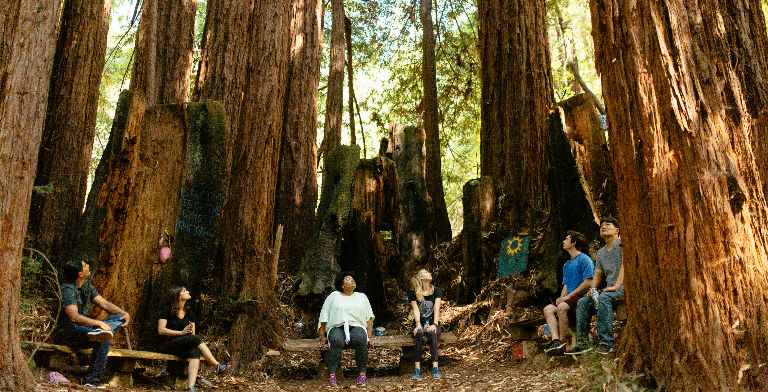The Camp Recovery Center helps adolescents & adults struggling with drug and alcohol addiction find long-term recovery. Located near Scotts Valley & San Jose, CA, The Camp provides premier substance abuse rehabilitation.
What are Dissociative Drugs?
What Are Dissociative Drugs?
Drugs such as PCP (phencyclidine) and ketamine, which were initially developed as general anesthetics for surgery, distort perceptions of sight and sound and produce feelings of detachment – dissociation – from the environment and self. But these mind-altering effects are not hallucinations. PCP and ketamine are therefore more properly known as “dissociative anesthetics.” Dextromethorphan, a widely available cough suppressant, when taken in high doses can produce effects similar to those of PCP and ketamine.
The dissociative drugs act by altering distribution of the neurotransmitter glutamate throughout the brain. Glutamate is involved in perception of pain, responses to the environment, and memory. PCP is considered the typical dissociative drug, and the description outlined below of PCP’s actions and effects largely applies to ketamine and dextromethorphan as well.
What Are The Facts About PCP?
PCP’s forms and effects
PCP, developed in the 1950s as an intravenous surgical anesthetic, is classified as a dissociative anesthetic: Its sedative and anesthetic effects are trance-like, and patients experience a feeling of being “out of body” and detached from their environment. PCP has been used in veterinary medicine but was never approved for human use because of problems that arose during clinical studies, including delirium and extreme agitation experienced by patients emerging from anesthesia.
During the 1960s, PCP in pill form became widely abused, but the surge in illicit use receded rapidly as users became dissatisfied with the long delay between taking the drug and feeling its effects, and with the unpredictable and often violent behavior associated with its use. Powdered PCP – known as “ozone,” “rocket fuel,” “love boat,” “hog,” “embalming fluid,” or “superweed” – appeared in the 1970s. In powdered form, the drug is sprinkled on marijuana, tobacco, or parsley, then smoked, and the onset of effects is rapid. Users sometimes ingest PCP by snorting the powder or by swallowing it in tablet form. Normally a white crystalline powder, PCP is sometimes colored with water-soluble or alcohol-soluble dyes.
When snorted or smoked, PCP rapidly passes to the brain to disrupt the functioning of sites known as NMDA (N-methyl-D-aspartate) receptor complexes, which are receptors for the neurotransmitter glutamate. Glutamate receptors play a major role in the perception of pain, in cognition – including learning and memory – and in emotion. In the brain, PCP also alters the actions of dopamine, a neurotransmitter responsible for the euphoria and “rush” associated with many abused drugs.
At low PCP doses (5 mg or less), physical effects include shallow, rapid breathing, increased blood pressure and heart rate, and elevated temperature. Doses of 10 mg or more cause dangerous changes in blood pressure, heart rate, and respiration, often accompanied by nausea, blurred vision, dizziness, and decreased awareness of pain. Muscle contractions may cause uncoordinated movements and bizarre postures. When severe, the muscle contractions can result in bone fracture or in kidney damage or failure as a consequence of muscle cells breaking down. Very high doses of PCP can cause convulsions, coma, hyperthermia, and death.
PCP’s effects are unpredictable. Typically, they are felt within minutes of ingestion and last for several hours. Some users report feeling the drug’s effects for days. One drug-taking episode may produce feelings of detachment from reality, including distortions of space, time, and body image; another may produce hallucinations, panic, and fear. Some users report feelings of invulnerability and exaggerated strength. PCP users may become severely disoriented, violent, or suicidal.
Repeated use of PCP can result in addiction, and recent research suggests that repeated or prolonged use of PCP can cause withdrawal syndrome when drug use is stopped. Symptoms such as memory loss and depression may persist for as long as a year after a chronic user stops taking PCP.
About LSD
Physical characteristics of LSD
LSD is a clear or white, odorless, water-soluble material synthesized from lysergic acid, a compound derived from a rye fungus. LSD is the most potent mood- and perception-altering drug known: oral doses as small as 30 micrograms can produce effects that last 6 to 12 hours.
LSD is initially produced in crystalline form. The pure crystal can be crushed to powder and mixed with binding agents to produce tablets known as “microdots” or thin squares of gelatin called “window panes”; more commonly, it is dissolved, diluted, and applied to paper or other materials. The most common form of LSD is called “blotter acid” – sheets of paper soaked in LSD and perforated into 1/4-inch square, individual dosage units.
Variations in manufacturing and the presence of contaminants can produce LSD in colors ranging from clear or white, in its purest form, to tan or even black. Even uncontaminated LSD begins to degrade and discolor soon after it is manufactured, and drug distributors often apply LSD to colored paper, making it difficult for a buyer to determine the drug’s purity or age.
LSD Effects
Effects of LSD
The precise mechanism by which LSD alters perceptions is still unclear. Evidence from laboratory studies suggests that LSD, like hallucinogenic plants, acts on certain groups of serotonin receptors designated the 5-HT2 receptors, and that its effects are most prominent in two brain regions: One is the cerebral cortex, an area involved in mood, cognition, and perception; the other is the locus ceruleus, which receives sensory signals from all areas of the body and has been described as the brain’s “novelty detector” for important external stimuli.
LSD’s effects typically begin within 30 to 90 minutes of ingestion and may last as long as 12 hours. Users refer to LSD and other hallucinogenic experiences as “trips” and to the acute adverse experiences as “bad trips.” Although most LSD trips include both pleasant and unpleasant aspects, the drug’s effects are unpredictable and may vary with the amount ingested and the user’s personality, mood, expectations, and surroundings.
Users of LSD may experience some physiological effects, such as increased blood pressure and heart rate, dizziness, loss of appetite, dry mouth, sweating, nausea, numbness, and tremors; but the drug’s major effects are emotional and sensory. The user’s emotions may shift rapidly through a range from fear to euphoria, with transitions so rapid that the user may seem to experience several emotions simultaneously.
LSD also has dramatic effects on the senses. Colors, smells, sounds, and other sensations seem highly intensified. In some cases, sensory perceptions may blend in a phenomenon known as synesthesia, in which a person seems to hear or feel colors and see sounds.
Hallucinations distort or transform shapes and movements, and they may give rise to a perception that time is moving very slowly or that the user’s body is changing shape. On some trips, users experience sensations that are enjoyable and mentally stimulating and that produce a sense of heightened understanding. Bad trips, however, include terrifying thoughts and nightmarish feelings of anxiety and despair that include fears of insanity, death, or losing control.
LSD users quickly develop a high degree of tolerance for the drug’s effects: After repeated use, they need increasingly larger doses to produce similar effects. LSD use also produces tolerance for other hallucinogenic drugs such as psilocybin and mescaline, but not to drugs such as marijuana, amphetamines, and PCP, which do not act directly on the serotonin receptors affected by LSD. Tolerance for LSD is short-lived it is lost if the user stops taking the drug for several days. There is no evidence that LSD produces physical withdrawal symptoms when chronic use is stopped.
Two long-term effects persistent psychosis and hallucinogen persisting perception disorder (HPPD), more commonly referred to as “flashbacks”-have been associated with use of LSD. The causes of these effects, which in some users occur after a single experience with the drug, are not known.
Psychosis & Drug Abuse
Does LSD cause Psychosis?
The effects of LSD can be described as drug-induced psychosis-distortion or disorganization of a person’s capacity to recognize reality, think rationally, or communicate with others. Some LSD users experience devastating psychological effects that persist after the trip has ended, producing a long-lasting psychotic-like state. LSD-induced persistent psychosis may include dramatic mood swings from mania to profound depression, vivid visual disturbances, and hallucinations. These effects may last for years and can affect people who have no history or other symptoms of psychological disorder.
Lasting Effects of Dissociations
Hallucinogen Persisting Perception Disorder
Some former LSD users report experiences known colloquially as “flashbacks” and called “HPPD” by physicians. These episodes are spontaneous, repeated, sometimes continuous recurrences of some of the sensory distortions originally produced by LSD. The experience may include hallucinations, but it most commonly consists of visual disturbances such as seeing false motion on the edges of the field of vision, bright or colored flashes, and halos or trails attached to moving objects. This condition is typically persistent and in some cases remains unchanged for years after individuals have stopped using the drug.
Because HPPD symptoms may be mistaken for those of other neurological disorders such as stroke or brain tumors, sufferers may consult a variety of clinicians before the disorder is accurately diagnosed. There is no established treatment for HPPD, although some antidepressant drugs may reduce the symptoms. Psychotherapy may help patients adjust to the confusion associated with visual distraction and to minimize the fear, expressed by some, that they are suffering brain damage or psychiatric disorder.
















